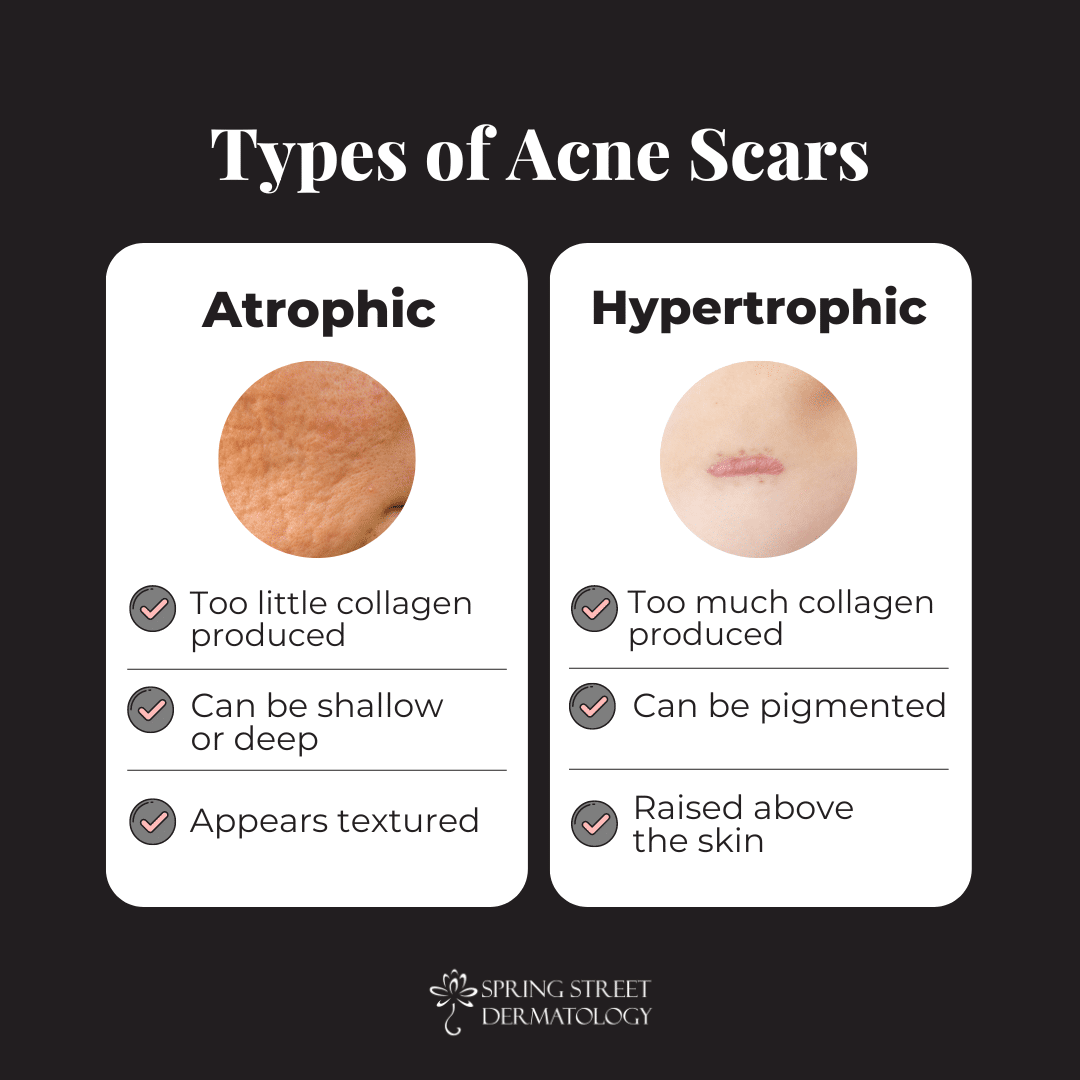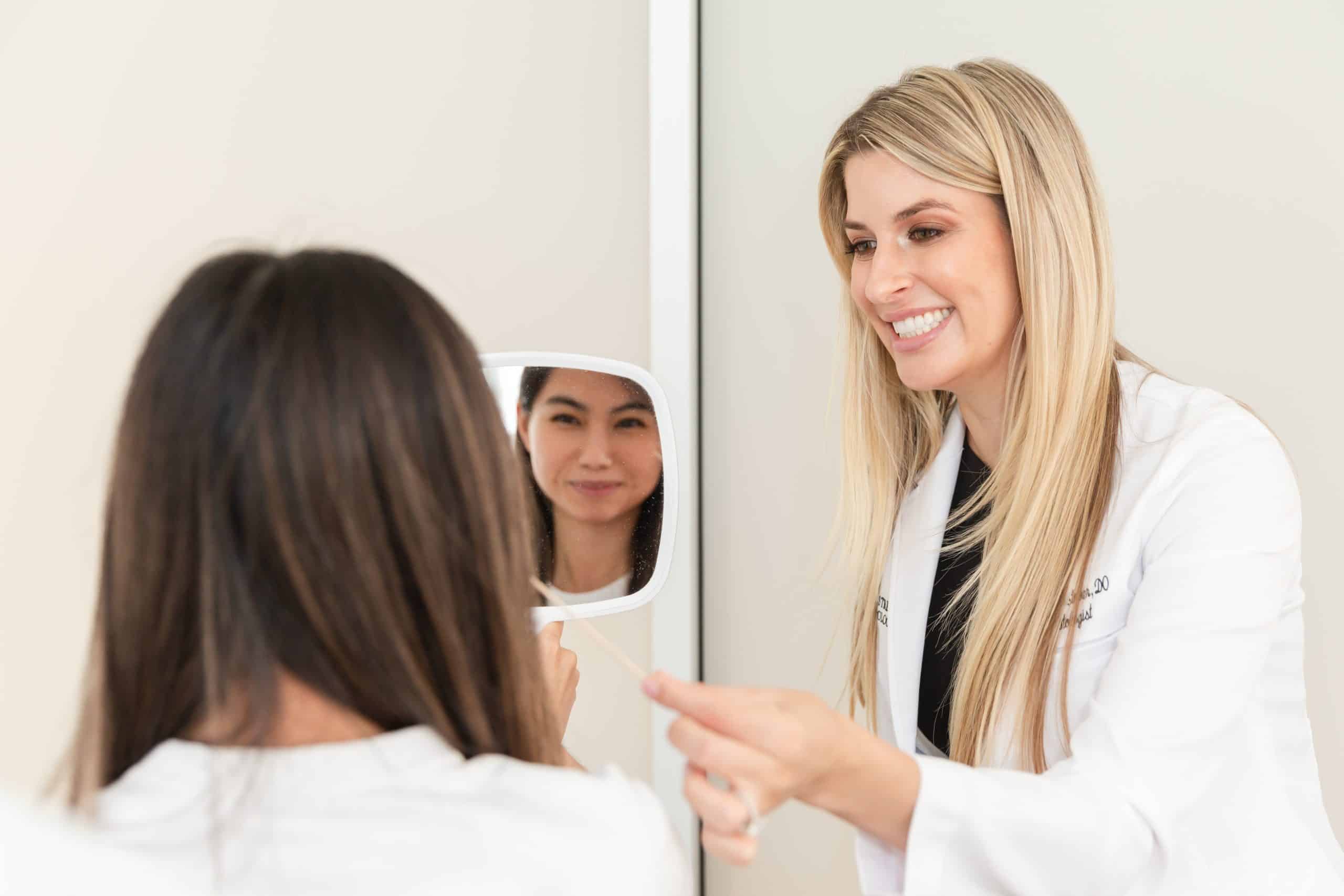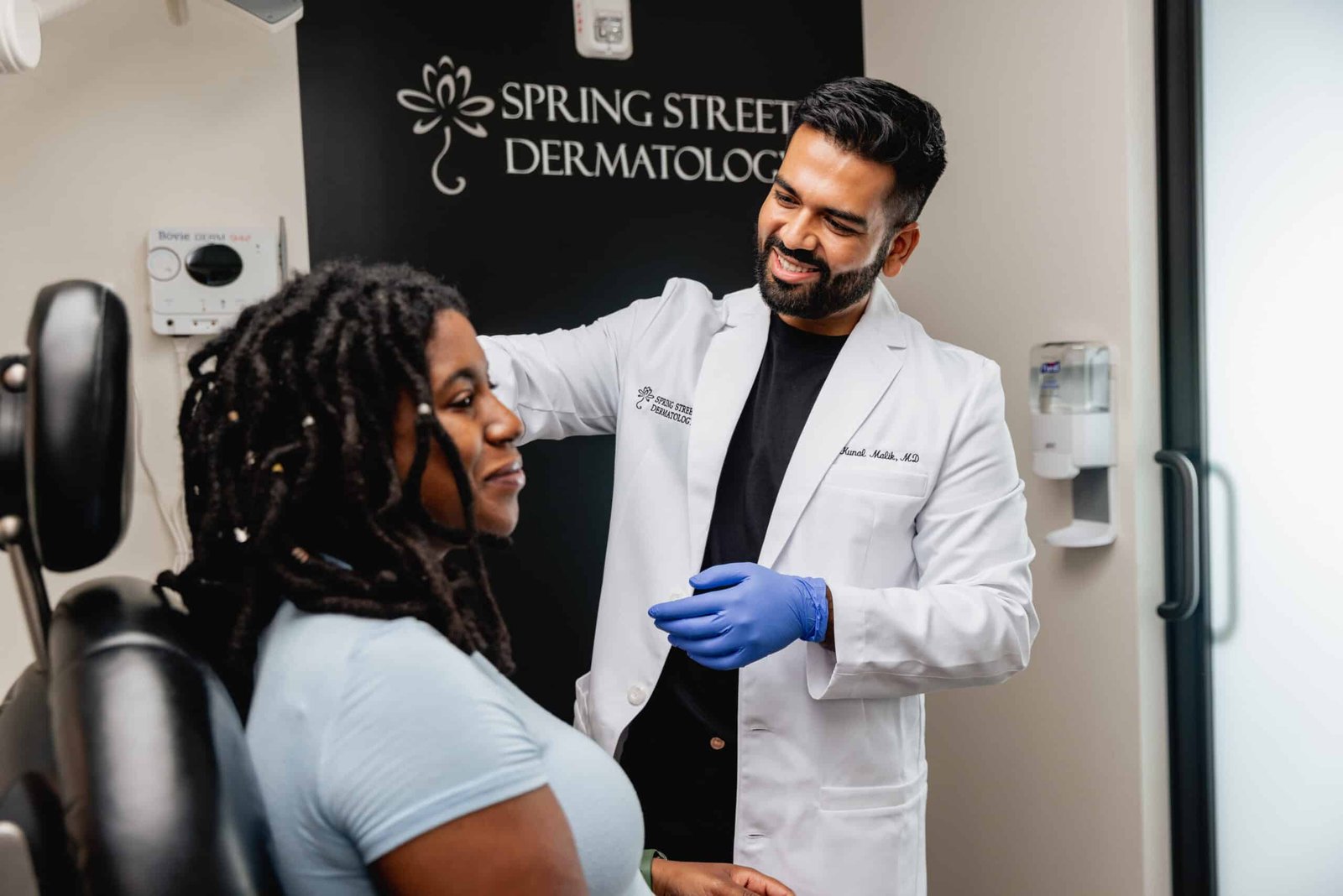Acne is more than a minor cosmetic concern; it’s a medical condition that can be frustrating and difficult to manage without professional intervention. In addition to physical symptoms like redness, swelling, and pustules, many people experience diminished self-esteem and confidence from acne.
Caused by a buildup of sebum (oil that lubricates the skin), dead skin cells, and bacteria, acne can affect people of all ages. Even after breakouts fade, this uncomfortable condition can continue damaging your skin.
Acne scars are even more challenging for some people than active acne, as they can be permanent without proper scar treatments.
Understanding Acne Scarring: Causes, Types, and Impact
Acne scars result from inflamed blemishes. They occur during the skin’s natural reparation process. When the skin heals, it sends collagen — an essential protein that provides structure for the skin — to repair the damage. It can produce too much or too little collagen, resulting in raised or pitted scars.
There are several types of acne scars, each requiring specific treatment approaches. Understanding the type of acne scar and available treatment options is crucial for effective management.
Atrophic
These scars are shallow depressions commonly caused by cystic acne. There are three types of atrophic scars:
- Boxcar: Typically shaped like a box, these broad scars have defined edges and are widespread on the skin. They usually appear on the lower cheeks and jawline.
- Ice pick: These scars look as though an ice pick was used on the skin, causing narrow indentations in the skin’s deeper layers. They are difficult to treat and require persistent treatment sessions.
- Rolling scars: These scars have sloping edges, making them appear uneven with various depths.
Hypertrophic
These scars are raised above the dermal layer due to a tissue buildup and are typically the size of the blemish. They are common on the back, chest, and jaw but can appear anywhere on the face or body.
Keloid: These scars are very thick, discolored, and raised, often spanning larger than the original blemish.
Post-inflammatory hyperpigmentation: While not a scar, skin discoloration is common when acne is severe or has been picked. The discoloration is usually manageable with proper skin care and sun protection.

Stimulating Skin Repair with Microneedling for Acne Scar Reduction
Microneedling is a minimally invasive treatment that can help reduce the appearance of acne scars. During the procedure, your dermatologist uses a handheld device with tiny needles to create small punctures in the skin. These micro-wounds prompt your body to produce more collagen, which can help minimize acne scars over time.
Skin injuries can disrupt collagen production. That’s why microneedling is so effective; by stimulating new collagen, the skin can heal and replenish itself, reducing the appearance of scars. Microneedling is safe for all skin types and can complement other treatments for enhanced results.


Secret RF
Secret RF is a radiofrequency (RF) microneedling device that uses gold-plated needles to create small channels in the skin. RF energy heats the skin for more effective results. Secret RF is a rejuvenating treatment with minimal downtime and many benefits, such as:
- Suitable for all skin types and tones
- Quick procedure
- Adjustable device
- Minimal discomfort with a topical numbing cream
- Long-lasting results that advance as collagen increases
Agnes RF
Agnes RF is another microneedling device that uses radiofrequency energy to target acne scars. The FDA-approved treatment uses regulated temperatures to regenerate healthy cells and improve skin tone and texture. The device has nine needle options for a more comprehensive skin approach with long-lasting results. Aside from acne scars, it can treat the following skin concerns:
- Skin laxity
- Under-eye bags
- Acne breakouts
- Jowl formation
- Submental fat
- Drooping brow line
Improving Skin Tone and Texture with Laser Treatments
Laser treatments deliver energy into the skin to trigger the body’s natural healing response and repair damage. Spring Street Dermatology offers many laser devices to treat acne scars, including:
Fraxel DUAL
Fraxel DUAL is a fractional resurfacing laser that stimulates collagen and elastin production to minimize the appearance of pigmented and textural acne scars with minimal downtime.
Juliet
The Juliet laser is a minimally invasive treatment that delivers energy through micro-channels, smoothing the skin’s appearance and producing new collagen and elastin for clearer, morre youthful-looking skin.
Injectable Fillers: Restoring Volume and Texture to Acne-Scarred Skin
Dermal fillers are another popular, effective, and minimally invasive option for improving the appearance of acne scars.
These gel-like substances include materials like hyaluronic acid, a natural molecule that can fill in areas that have lost volume due to scarring. By restoring volume, injectable fillers can help lessen the appearance of pitted scars and create a smoother texture. This treatment option is particularly effective for those with deep acne scars.
Preparing for Acne Scar Treatments: What to Expect
Acne scar treatments require minimal preparation. Your dermatologist may instruct you to avoid certain skincare products or medications that can increase the risk of complications or impact the effectiveness of the treatment.
Before the procedure, your dermatologist thoroughly cleans and numbs the treatment area to minimize any discomfort.
After your procedure, you may experience mild side effects, such as:
- For microneedling and laser treatments: Expect some redness and mild swelling for a few days following the procedure. Your skin may also be more sensitive to the sun.
- For dermal fillers: Expect minor bruising, redness, or swelling at the injection site. These effects typically subside within a week, and you can resume activities after the procedure.
Depending on the severity of the scarring, multiple treatments may be necessary for optimal improvement.
Acne Scar Treatments in NYC
Spring Street Dermatology is a renowned dermatology practice with a team of board-certified dermatologists and convenient offices in Soho and Uptown. Contact us to schedule a consultation and learn about the best treatment for acne scars that suit your unique needs, skin concerns, and aesthetic goals.

